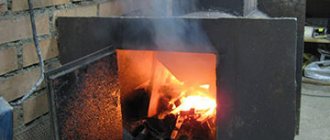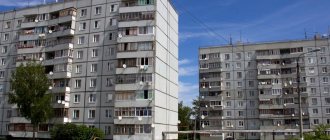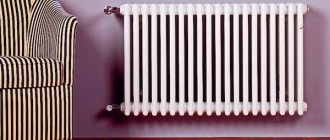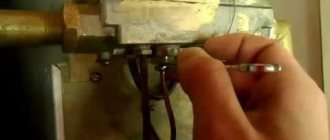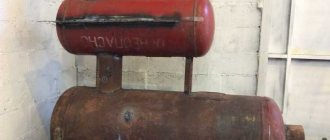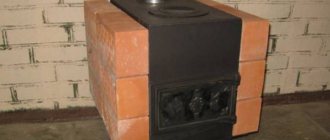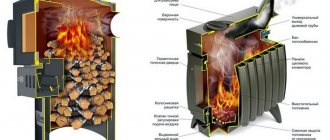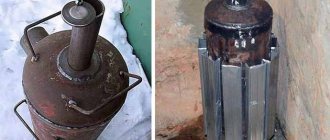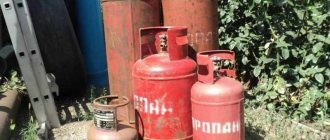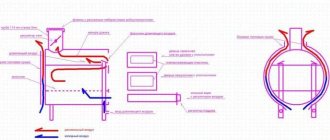When various means for heating a room began to appear, modern people began to move away from using the traditional potbelly stove. They began to consider such a stove a simple relic of the past. But in fact, it is effective in use, does not require much expense and does not take up much space.
Those who still prefer such a stove often face the problem of smoking. During operation, smoke appears in the room, and some areas of the stove become covered with soot. Why is this happening? And how to eliminate the reasons? You can deal with these issues without the help of specialists - on your own.
Soot adhesion
The most common source of deterioration in draft is the adhesion of soot on the walls of the chimney. The internal diameter of the pipe becomes so narrow that smoke, accumulating, exits through any cracks in the unit body. The degree of soot adhesion does not depend on the location of the stove: in a bathhouse or in a house. Incorrect operation and certain types of burned wood contribute more to its formation. The first factor includes insufficient insulation of the chimney, and the second is the burning of coniferous logs. The only way to repair in this case is to clean the chimney.
How to clean a chimney?
The mechanical cleaning method requires special devices:
ruff, cable, weight.
First, a weight attached to a cable is lowered into the chimney. This way you can find an obstacle or a place where the pipe has narrowed. If it is necessary to push through any object that has blocked the channel, the weight is thrown down with force. At the next stage, the pipe is cleaned with a brush. It has the shape of a square or round brush, its dimensions should be slightly larger than the pipe hole. Using down/up movements, the chimney is cleared of soot and accumulated small debris.
No traction in the stove in the bathhouse: what actions to take
It happens that the stove in the bathhouse smokes and burns poorly due to poor draft. You can make a device for cleaning pipes from soot with your own hands. You will need:
- rope;
- plastic bottle;
- load (sledgehammer).
What to do:
- Attach a sledgehammer (a metal part with a hole) to the end of the rope.
- In the middle part of the bottle, make longitudinal cuts along the entire perimeter at a distance of 1.5-2 cm from each other. When the device moves up and down the pipe, they will scrape soot from the walls.
- Make holes in the bottom of the bottle and in the tire.
- Place the container on a rope (over a sledgehammer) and screw on the lid.
- Tie a knot in the rope over the tire hole.
- Clean the pipe.
Some of the soot will fall into the firebox, and some will fall inside the bottle. The draft will become normal, the stove will stop smoking.
Causes in the chimney
3.1 Construction
The following errors were made when assembling it:
- The wrong section of the hose was chosen - the lumen diameter is less than 150 mm (in a private house). As a result, the exhaust gas simply does not have time to leave the channel and goes back into the room.
- During assembly, pipes of different sections were taken, which leads to a leaky joint and smoke leakage into the room.
- The absence of a cold-formed socket system in chimneys (all chimneys in Ferrum's product range have such a socket) leads to loose joints at which air turbulence appears, preventing combustion products from escaping.
- The inlet of the well in a brick kiln is located below the level of the door - reverse draft occurs immediately, as soon as the firebox is slightly opened. That is, every time you add logs, if firewood is used.
What to do if the stove smokes due to poor chimney design? Naturally, the shortcomings must be corrected, that is, the channel must be rebuilt in accordance with all standards to ensure that the spent steam quickly escapes out.
3.2 Incorrect chimney height
Problems with reverse thrust are practically guaranteed if:
- the pipe does not rise above the peak point of the roof by at least 500 mm, as expected, but ends earlier;
- the channel for removing combustion products (counting from the stove) is shorter than the minimum duration of 5 m;
- the chimney is below the ridge (located at a distance of 1.5-3.0 m) or is at an angle of more than 10 0 to it (at a distance further than 3.0 m), or rises by 120 cm, but is not reinforced with special braces.
The solution to the issue in this case is similar to the previous one: it is necessary to remake the sleeve, eliminating its design flaws.
3.3 Pipe size
This is the case when the design as a whole is correct, but a miscalculation was made when arranging one specific element. Among the most common mistakes:
- the hole in the brick chimney is not wide enough - it should be 140 by 140 mm if coal is used as fuel, and 140 by 270 mm if peat briquettes or ordinary firewood;
- the height above the ridge level does not reach 50 cm or above the roof does not exceed 75 cm;
- narrowing the cross-section of stainless steel chimney channels.
Once the reasons why the stove smokes and poor draft are established, and what to do in this case? If the problem is in the cross-section, you will have to change the pipe; if it is in height, then it can be increased. Just don't go to the opposite extreme and make it too high - this will make cleaning and maintenance difficult.
3.4 The chimney is clogged with soot
Difficulties arise when the channel is poorly insulated, condensation forms in it, and the escaping gas mixes with moisture and settles in the sleeve in the form of a black coating. Over time, the previously smooth surface becomes even rougher, traps more and more combustion products, and the exhaust hole only narrows, which leads to increased backdraft.
In practice, blockage is a common reason why the stove in the house smokes when lighting. This means you need to know how to eliminate it. You can clean the pipe either mechanically or chemically.
- In the first case, you should arm yourself with a long brush specially designed for this purpose, purchased in a store or made yourself from a metal cord and a rag. Carefully walk it along the sleeve, and at the same time you will remove any debris that gets there.
- In the second, it is necessary to add a substance to the fuel, which during combustion mixes with steam and, when released outside, destroys soot. The main thing is that it is environmentally friendly and non-aggressive. By the way, it is not necessary to use household chemicals - you can add a little rock salt to the same firewood.
3.5 Traction tipping
This phenomenon occurs due to problems in the functioning of the heating system and smoke duct. You can check if you have this problem in the following ways:
- using an anemometer;
- a lit match or paper brought to an open firebox;
- if there is a smell of smoke in the room, there is no craving;
- if everything is fine, the flame in the stove is white, and in case of malfunctions, it is red.
To solve the problem, you can try to increase the diameter of the pipe or install special devices that enhance the movement of smoke - a deflector, stabilizer, rotary turbines.
3.6 Use of non-insulated chimneys
This leads to supercooling of the flue gases. In addition to the formation of excess condensation, which leads to the accumulation of soot (we wrote about this above), there is a threat of freezing of the chimney.
Our production
3.7 Excessive amounts of vapor and condensate in flue gases
This prevents them from being removed. This problem can be solved by specialists by correctly selecting the fuel and operating mode of the furnace.
There is no draft in the stove, the stove smokes in the house: what to do
In private houses heated by stoves, soot settles on the walls of chimneys; over time, the channel cross-section decreases and the draft decreases. Reasons why a pipe gets dirty:
- Raw wood is burned in the stove. When wood burns, moisture turns into steam; it settles on the cold walls of the pipe in the form of condensate, trapping solid combustion products, which leads to the formation of soot;
- Instead of firewood, wood processing waste (fibreboard, chipboard, plywood) is used. The resins that they release during combustion settle on the walls, narrowing the lumen;
- The design of the chimney is complex; there are curved areas where soot accumulates.
When the chimney becomes clogged, the stove begins to smoke, the wood does not burn well, and the flame goes out. You can clean it yourself by purchasing a suitable device in the store:
- steel brush;
- brush-rope;
- “Chimney sweep” set, consisting of a cable, a weight, and a brush.
It is convenient to clean the chimney with a brush with a long telescopic holder. Carry out work when the oven has completely cooled down. You need to empty the firebox from the ash, close the door and the vent. To prevent soot from flying into the room, it is better to put a damp cloth over the door. The gate is fully open.
To clean the pipe, you will have to climb onto the roof and first work with a brush and a weight, and then remove thick layers of carbon deposits with a metal scraper. You can finish cleaning the pipe with a brush on the handle. The firebox is cleaned with a long-hair brush or a special drill attachment.
Smoke when lighting
The stove smokes when lit in the cold season. This problem often occurs with ovens that are not used regularly. For example, the unit is located in a bathhouse or country house. A column of cold air forms a plug in the chimney that blocks the draft. Stove makers advise getting rid of it in the following ways:
- bring a burning torch to the smoke collector,
- burn a piece of paper directly next to the smoke collector.
These techniques allow the plug to warm up, rise up and come out. The problem of cold plug occurs not only with brick, but also with metal stoves that are installed in bathhouses and saunas (heaters). If the house is 2-story, you should know that the plug often collects in the horizontal part of the chimney, if it is on the 2nd floor. According to masonry technology, the length of this section (box) should not be more than 2 m.
Other causes of stove smoke
Poor-quality mortar, too thick masonry joints, lack of firebox lining or deformation in it lead to cracks in the furnace body. This causes constant smoke; it is not recommended to operate the unit in this condition. Repairs are carried out by sealing the cracks with special adhesive solutions. If this does not help, you will have to disassemble the body and build the stove again.
Smoke coming from a stove into a heated room is an unpleasant and dangerous phenomenon, but it is sometimes difficult for an inexperienced person to determine the reasons for its appearance. Why the stove smokes, possible reasons for its malfunction and tips on how to eliminate them from an experienced stove maker are given below.
Sometimes in calm weather the stove works normally, but in windy weather it either burns or “releases” smoke into the room from the stove door or damper. The cause of this is most likely a tall tree or wall located next to the house. The wind, hitting such a barrier, enters the chimney and prevents the smoke from escaping. To correct the situation, it is necessary to install an umbrella cap on the pipe, which will protect it from the wind. Such a cap is also needed if the stove is difficult to light in hot weather.
If there are no high barriers to the wind near the chimney, then a possible reason why the stove smokes may be the location of the chimney below the highest level of the roof. According to the rules, the pipe must be located at least 25 centimeters above the ridge.
It is very easy to check whether a cap is needed over the chimney if the stove is smoking. Two halves of brick are placed at the corners of the pipe, and a sheet of iron is placed on them. If after 3-5 minutes the stove stops smoking, then a stove hood is needed.
Another possible reason why the stove smokes may be the destruction of the upper seams of the pipe masonry (if it is brick) by rain and exhaust gases, as a result of which the upper bricks fall out of it. The wind gets into the damaged areas of the chimney, and the stove begins to smoke. In such a situation, the pipe must be repaired.
A very possible reason why a Russian stove smokes is the small size of the pipe or views, as well as a poorly closing view door. It is necessary to make overlaps at the top of the pipe, which not only create good draft for the stove, but also improve the appearance of the pipe.
The blower in a Russian stove must be shorter than the firebox, otherwise the cold air entering the blower in large volumes reaches the back of the firebox and, pushing away from it, displaces smoke from the firebox. If you put such a vent in half a brick, then the stove will not smoke.
It happens that the stove smokes in any weather, and when you open the door, the smoke seems to “stretch” after it and enters the room. When this happens, you need to look into the firebox. If there is an oven under the stove stove, then there must be a brick wall between it and the combustion chamber. If it or the cabinet is lower than the top of the door opening, then you need to make a clay border on the wall so that it is higher. The draft in the oven will be excellent even if the height difference between the side and the stove is several centimeters.
Another possible reason why the stove smokes is that the gases exit the firebox below the opening of the fire door. This situation can be corrected by building a brick wall across the firebox, the height of which will exceed the height of the door opening.
If the stove smokes and smoke comes out of the valve or valve, it means that the pipe is clogged with soot or, for example, a brick that has fallen into it. The chimney needs to be cleaned.
Another, quite common, possible reason why a stove smokes is the clogging of the vent with ash, and if the stove is a heating and cooking stove, then the oven burns out.
How to make a chimney for a potbelly stove through a wall
If, while searching for the reason why a potbelly stove smokes when the door is opened, it was found that the problem is not contamination, then the problem is a faulty design.
You can make and install a chimney yourself. For a potbelly stove, a metal option is more suitable than a brick one. For these purposes, the most suitable would be alloy steel with a special coating that protects the surface from the effects of oxides. Just don't use aluminum pipe - it will melt.
During production you will need the following elements:
- Metal pipes for the base of the chimney. A diameter of 16 cm is suitable.
- Elbows for joining. Their number will depend on how many times the direction of the pipe will be turned.
- Protective cap for the upper part of the chimney.
- Pocket for condensation.
- Sealant for fastening seams.
- Clamp for fastening the pipe.
- Thermal insulation.
Once all the materials are ready, you can begin installation:
First of all, a through hole is made in the wall. Moreover, if the wall is wooden, a special metal box is installed with a hole in the center, which is 5 mm larger than the diameter of the pipe. For a brick wall, a pass-through glass is used.
The box is filled with basalt glass wool, and the hole is filled with asbestos strips.
- Next, the first section of pipe is placed on the nozzle of the potbelly stove. In this case, the design is complemented by a heat-resistant seal and a special clamp that will prevent gas breakthrough.
- An elbow is installed that takes the pipe towards the wall.
- After the pipe is brought out, a pipe and elbow are installed.
Example of an external chimney pipe
- The outer chimney pipe is insulated. To provide stability, you can secure the structure with brackets.
- A protective cap is placed on the top of the pipe.
Having figured out how to install a chimney through a wall, you can also pay attention to the options for a chimney through a window for a potbelly stove and through the roof. Thus, having studied all the necessary instructions, you can take a number of actions to clean the finished pipe or create a new one. Such measures will help get rid of the smoke from the potbelly stove.
Such measures will help get rid of the smoke from the potbelly stove.
Thus, having studied all the necessary instructions, you can take a number of actions to clean the finished pipe or create a new one. Such measures will help get rid of the smoke from the potbelly stove.
We also recommend studying this topic:
Potbelly stove under development: pros and cons
With the onset of the cold season, many motorists are faced with a logical question - how to heat the garage, especially if it does not have a central heating system or the heating main runs far enough to be connected to it. In this case, the option of installing a stove will come to the rescue. Most often, for small rooms in which permanent residence of people is not envisaged, the most practical and inexpensive version of the stove is used for heating purposes - a potbelly stove using waste petroleum products.
We also recommend studying this topic:
Do-it-yourself potbelly stove for the garage: options for wood and mining
In winter, it is very cold to be in the garage, so many car enthusiasts install homemade potbelly stoves indoors. These stoves heat up your garage quickly and can also be used to cook food. Most often, garage workers install potbelly stoves using wood or waste oil.
Tags: door, smoke, iron, opening, stove, why
« Previous entry
Guide to choosing and installing a potbelly stove in the garage
Installing compact potbelly stoves will help ensure positive temperatures in the garage in winter. Due to their operational properties (small size and transportability, quick heating of the room, budget price), potbelly stoves have gained popularity among vehicle owners with garages.
The photo shows an example of a potbelly stove for a garage
Specifications
The dimensions of the stove installed in the garage are very important, since garages usually do not have large areas. A potbelly stove with dimensions: length 47 cm, width 32 cm, height 31 cm plus legs approximately 20 cm high, can quickly fill a garage with a standard area of 32 square meters. m.
Photo
The photo shows a classic potbelly stove for the garage
The picture shows a super potbelly stove for the garage (gas generator model).
Homemade potbelly stove for the garage in the picture
How to do it?
The design of a potbelly stove stove is not particularly difficult, and if desired, such a stove can be built independently. A potbelly stove is a metal container with thick walls, divided into two sections by a special grate - a grate. Firewood is placed in the upper compartment through the loading door, the lower compartment is used as an ash pan and an ash pit. A chimney outlet is equipped from the combustion chamber.
First, before starting to build the stove, it is recommended to sketch out a drawing in order to have a minimal idea of the structure of the potbelly stove and its dimensions.
The picture shows a drawing of a potbelly stove for a garage
You can weld a potbelly stove for the garage either from sheet iron or from an old two-hundred-liter barrel. When using sheet material, you should focus on perpendicular shapes when equipping the stove. The sheet material is cut to the dimensions specified in the drawing, and you can begin welding the parts. First, three side walls are welded to the bottom; the corners must be straight.
Then the firebox bottom is welded, with the slots previously made in it. Keep in mind that the distance from the bottom of the firebox to the bottom of the ash pan must be at least ten centimeters. A hole is cut in the back wall for the future chimney. Next, the front wall is welded, in which rectangular holes are pre-cut for the ash door and firebox; some craftsmen make one common door for two compartments.
Doors are made from cut metal parts and hung on hinges welded to the stove body.
You can make a stove from a barrel in two versions: horizontally and vertically. In a vertical position, a hole is cut in the upper part of the barrel and a chimney is installed, a hole is cut out on the side for the door, and the interior of the barrel is divided into two sections using a special lintel/grid. Making sand in a horizontal position follows a similar principle.
A potbelly stove operating during mining is characterized by high efficiency and minimal fuel consumption. Structurally, such a stove consists of two containers connected by a perforated pipe, the lower container is intended for filling with used oil (in this container the oil is brought to a boil), oil vapors are burned, rising through the perforated pipe, their final combustion occurs in the upper chamber, from which they are removed chimney.
When constructing a stove operating on waste oil, you can use two pieces of large diameter pipe (32 - 35 cm) to equip the housings of the upper and lower sections. For the perforated intermediate chamber and chimney, a pipe with a diameter of 10 cm can be used.
The stove manufacturing process usually begins with the manufacture of the lower section.
The bottom is welded to a piece of large-diameter pipe, the upper part of the container should be made removable, and the sliding lid is attached to a bolted connection. Two covers are prepared for the upper chamber, a hole is cut in each of them through which the chimney will pass. Additionally, you should prepare a jumper that will prevent vapors from escaping too quickly into the chimney.
All prepared parts are welded together.
Installation
In order for the potbelly stove to operate as efficiently as possible, it must be positioned correctly. It is recommended to install the stove in the far corner of the garage. To increase fire safety, fire-resistant material is laid on the floor under the potbelly stove.
How to make a chimney?
The chimney pipe must be routed in the opposite direction from the installed stove. When installing a chimney, keep in mind that the pipe cannot be laid at an angle of ninety degrees, and the chimney must have a slope of thirty degrees to ensure good draft.
When installing a potbelly stove in a garage, it is recommended to equip an additional exhaust hood and fresh air ventilation.
Why does it smoke?
The most common reasons why a potbelly stove may smoke is an insufficient diameter of the chimney (must be at least 110 mm), as well as insufficient height of the pipe (it must be at least three meters).
What to heat with?
You can heat a potbelly stove either with solid fuel (coal or wood), and also when installing certain models, you can use waste oil as fuel.
Cost of potbelly stoves for garage
The cost of potbelly stoves varies, depending on the dimensions of the product and model, from 3,500 rubles. up to 11,000 rub.
Where to buy a potbelly stove for the garage?
Where to buy in Moscow:
- , Khoroshevskoe highway, 78. Tel.: + 7 (495) 473-75-73;
- , st. Frezernaya, 2. Tel.: + 7 (495) 673-70-36;
- “Aspect Plus” store, Talalikhina str., 41, building 9. Tel.: + 7 (926) 683-31-58.
Where to buy in St. Petersburg:
- OOO "Pechi", st. Domostroitelnaya, 11. Tel.: + 7 (812) 956-24-22;
- Store "Stoves-Fireplaces", 3rd Verkhniy lane, 9. Tel.: + 7 (812) 748-27-37;
- Shop "Protopka.Ru", st. Torzhkovaya, 5. Tel.: + 7 (812) 929-31-00.
Watch the video for recommendations on how to create a potbelly stove for your garage:
An important factor influencing the choice in favor of a potbelly stove is its versatility. With the help of a potbelly stove, you can not only heat the room, but also, if necessary, cook food on it or heat water, which is undoubtedly a big plus.
Source: https://kakgarazh.ru/otoplenie/rukovodstvo-po-vyboru-i-ustanovke-burzhujki-v-garazh.html
Causes
Having analyzed all the situations by type, let’s move on to listing the reasons why smoke begins to flow in the direction opposite to the plan. Let's answer the question, why does the fireplace smoke?
All reasons can also be classified. They will be divided depending on whether the reason lies in a design flaw or in incorrect operation.
The geometry of the fireplace is taken arbitrarily. The ratio of the size of the firebox to the dimensions of the fireplace affects the formation of draft. If the master made a mistake at this stage, then all that remains is to radically correct it. We can classify into a separate group such a fatal mistake as a discrepancy between the size of the firebox and the room that will have to be heated. The location of the fireplace in a flight of stairs, between windows, next to a door will lead to the fact that combustion products will leave the firebox along the path in which they encounter less resistance. This path will lead you through the room to a nearby window or door. If there is no draft, then the first thing you need to do is check all the dimensions of the chimney with those recommended when using a specific fireplace laying scheme. An excessively small channel area increases resistance to the movement of gases, while a large one promotes the penetration of parallel air flow from top to bottom
Here you will need to pay special attention to the height of the pipe. Insufficient height will not provide adequate pressure difference
In order for smoke to go down the chimney, you should not change its direction without good reason. All bends and knees are an additional obstacle, leading to reduced traction.
All bends and knees are an additional obstacle, leading to reduced traction.
- The quality of the brick or prepared mortar often leads to the formation of cracks. They can also cause improper operation of the fireplace. In any case, gases penetrate into the room through these cracks.
- What to do if the fuel is raw? It is better to completely avoid lighting the fireplace with raw wood. A larger amount of smoke may simply not have time to evaporate. A kind of plug will form in the firebox, which will force combustion products to exit through the door into the room.
- There are several known reasons that are characterized by the condition of the chimney itself. When checking the channel, it turns out that it is clogged with fallen leaves, fallen bricks or a fallen bird's nest. After removing the blockage, traction is restored.
- Fireplace cleaning and preventative maintenance are mandatory procedures. Soot forms on the walls of the chimney in geometric progression. Soot and soot deposits themselves are centers for the growth of new formations. If you skip a chimney cleaning session, this will certainly lead to the rapid appearance of smoke in the room.
- Natural phenomena may also be the cause. Low atmospheric pressure or wind with precipitation leads to reverse draft. Since it is impossible to correct nature, in this case it is recommended to wait out unfavorable conditions.
Why does the stove smoke in the wind?
When there is wind, the stove smokes into the house. When there is no wind, it heats just fine, but when there is a back wind, there is a reverse draft. The house is in a field, there are no fences. They installed a deflector (a pipe in a pipe) - it doesn’t help. Even when there is no heating, everything smells like burning. The pipe was raised and lowered below the ridge. Have you switched the oven, but it still doesn’t help?
As already written, the wind simply blows into the pipe. Under normal conditions, when everything is installed correctly, this should not happen even in strong winds. But still, if there is such an effect, firstly you need to take into account how you intake air to create draft in the pipe and also install a special weather vane nozzle on the pipe, which will automatically turn towards the wind, thereby preventing air from being blown out into the pipe. By the way, look at how far your lyada opens, it is quite possible that part of the smoke comes through the hole where the lyada is inserted, this happened to me.
In fact, smoke is formed due to incomplete combustion of firewood in this case. and this occurs when there is a lack of oxygen for combustion. Well, accordingly, in a furnace this happens when there is poor draft. Simply put, when there is a strong wind, the draft decreases and there is not enough oxygen. And as you wrote in the explanation, they raised the chimney, but the stove continues to smoke in the wind. And by the way, umbrellas for the chimney don’t help either. But usually in such cases chimneys or deflectors are used. Here's how in
But of course, this problem must be solved comprehensively. And to do this, you need to check if there are tall trees or high fences nearby.
And we must also take into account that the location of the pipe on the wind side can also be a reason. since the wind can be reflected from the roof. Well, the last thing is that the westerly wind usually brings precipitation and if the humidity of the incoming air increases, then smoke may appear accordingly.
The smoking problem can have several causes. But judging by your question, I’ll try to answer. The stove barely works in calm conditions, but smokes in the wind. Most likely, it is not built correctly, in particular, the chimney is widened. The chimney of a heating stove, up to 3000 kcal/hour, is placed in half a brick, the smoke picks up a decent speed and it is impossible to turn it around in the wind.
The second option, when on the eastern side of the house there is a screen, trees, the wall of a high-rise building, etc., with a western wind, it is as if there is excess pressure, which pushes the smoke back.
In both cases, you can fight smoke with the help of a screen, an ordinary sheet of iron placed on the western side. 20-25 cm above the pipe and the pipe wrapped on the floor, the visor is unique.
Or a conical cap over the pipe, so that it is 10 cm larger than the pipe and 7-10 cm above the pipe. When there is wind, a vacuum forms in the hood and the smoke is sucked out of the chimney.
P>S> The height of the pipe should be half a meter above the ridge, when located up to 1.5 meters from the ridge. When located further than 1.5 meters, level with the ridge horizontally, but not less than half a meter from the roof.
The problem has been known for a long time, it is called the draft overturn effect. This is when you experience backdraft due to problems with the chimney or ventilation system in your home. Check whether there is enough air in the house to the furnace and where your draft goes. The second reason may be that the chimney pipe is not high enough. It is not uncommon for this effect to occur if there is a taller house and tall trees nearby. This also happens due to debris in the chimney or design errors in it, for example, there may be several too narrow smoke channels in the chimney.
How to solve the problem? Extend the chimney, its total height should not be lower than five meters and this is in ideal conditions, clean the chimney itself and make sure that no design errors were made with the smoke circulation channels during the construction of the stove. It is also necessary to solve the problem with the air flow to the stove and it would not be superfluous to insulate the chimney from the outside of the building. I believe that these tips will allow you to cope with the problem of tipping over.
Pulls, but not there
If the stove has not been used for a long time, a “backdraft” effect may occur - a cold air plug accumulated in the chimney does not allow the warm flow to pass through, and smoke enters the room. What to do? Raise the temperature in the pipe! To do this, before adding fuel, open the dampers and throw burning paper through the cleaning door.
The smoke exhaust duct will warm up, the heated air will rise, and the draft will be restored. If this does not happen, the operation must be repeated again. But now the paper must be thrown directly into the pipe directly from the roof. After the fire goes out, light a torch in the firebox and see where the smoke goes.
We suggest you read: The best way to paint a bathhouse inside
If it’s outside, that means you can lay firewood. A special attachment, a deflector, will help prevent backflow. This is a cylindrical metal product that is installed on top of the chimney. Thanks to its design, the device creates an area of low pressure, increasing traction.
How to clean the stove and chimney with your own hands
The pipe can be cleaned without climbing a ladder to the roof. There are special chemicals available for removing soot:
- Chimney Sweep log. This is a small briquette consisting of coal wax, phosphorus oxide, and ammonium sulfate. It is placed in the firebox and set on fire, it burns for 1.5 hours, clearing the walls of the chimney channel of soot.
- “Komichek” - granules for cleaning metal sandwich pipes and brick chimneys, packaged in small bags. Contains copper chloride and activated carbon. The bag is thrown into the oven on firewood, the door is closed tightly. When burned, chemicals are released that dissolve the soot.
- PKH is an anti-carbon chemical composition.
Effective cleaning of soot from a pipe can be done using the old fashioned methods:
- dry potato peelings. Place the dry peel into a well-heated firebox and set it on fire. The starch that is formed during combustion will dissolve soot build-up on the pipe walls. For preventative cleaning, you will need a full bucket of cleaning;
- mix 7 parts of saltpeter, 2 parts of coal, 5 parts of vitriol, burn a small amount (20 g) in the stove with the door tightly closed. Carry out the procedure 1-2 times a month;
- several times during the heating season, burn an armful of aspen firewood in the stove;
- Throw mothballs into the hot firebox. The product releases vapors that destroy the soot layer;
- Burn 2 liters of walnut shells in the oven;
- Throw a couple of tablespoons of salt onto burning wood; it softens the layer of soot, which lags behind the walls and falls into the firebox in the form of flakes.
You need to be careful when cleaning pipes with mothballs and walnut shells. Naphthalene is explosive and can ignite soot in the pipe
Walnut shells have a high combustion temperature, which can cause the pipe to become deformed and crack.
If the draft is good and the stove does not smoke, the chimney still needs to be cleaned. Soot deposited on the walls can ignite at any time and cause a fire. The safety of the home, garage, bathhouse and the operation of the heating device depend on the cleanliness of the pipe.
How to check draft in a chimney duct
In a house with a boiler or stove, it is necessary to carry out a scheduled check of the chimney before the start of the heating season. It is in good working order, if there is traction, its presence is checked using old-fashioned methods:
- They bring a burning candle to the chimney. The flame does not deflect - there is no draft. The flame is deflected - there is draft, but not enough. The candle goes out - the draft is good.
- Tear off a strip of toilet paper and bring it to the chimney channel; if the system is working properly, the paper strip will rush towards the hole.
Comment!
The air exchange rate for a living space is 90 m³/hour.
The chimney of a gas boiler is checked using an anemometer - a device that measures the speed of air passing through the chimney duct per unit of time.
How to make a chimney for a potbelly stove through a wall
If, while searching for the reason why a potbelly stove smokes when the door is opened, it was found that the problem is not contamination, then the problem is a faulty design.
You can make and install a chimney yourself. For a potbelly stove, a metal option is more suitable than a brick one. For these purposes, the most suitable would be alloy steel with a special coating that protects the surface from the effects of oxides. Just don't use aluminum pipe - it will melt.
During production you will need the following elements:
- Metal pipes for the base of the chimney. A diameter of 16 cm is suitable.
- Elbows for joining. Their number will depend on how many times the direction of the pipe will be turned.
- Protective cap for the upper part of the chimney.
- Pocket for condensation.
- Sealant for fastening seams.
- Clamp for fastening the pipe.
- Thermal insulation.
Once all the materials are ready, you can begin installation:
First of all, a through hole is made in the wall. Moreover, if the wall is wooden, a special metal box is installed with a hole in the center, which is 5 mm larger than the diameter of the pipe. For a brick wall, a pass-through glass is used.
The box is filled with basalt glass wool, and the hole is filled with asbestos strips.
- Next, the first section of pipe is placed on the nozzle of the potbelly stove. In this case, the design is complemented by a heat-resistant seal and a special clamp that will prevent gas breakthrough.
- An elbow is installed that takes the pipe towards the wall.
- After the pipe is brought out, a pipe and elbow are installed.
Example of an external chimney pipe
- The outer chimney pipe is insulated. To provide stability, you can secure the structure with brackets.
- A protective cap is placed on the top of the pipe.
Having figured out how to install a chimney through a wall, you can also pay attention to the options for a chimney through a window for a potbelly stove and through the roof. Thus, having studied all the necessary instructions, you can take a number of actions to clean the finished pipe or create a new one. Such measures will help get rid of the smoke from the potbelly stove.
Such measures will help get rid of the smoke from the potbelly stove.
Thus, having studied all the necessary instructions, you can take a number of actions to clean the finished pipe or create a new one. Such measures will help get rid of the smoke from the potbelly stove.
We also recommend studying this topic:
Potbelly stove under development: pros and cons
With the onset of the cold season, many motorists are faced with a logical question - how to heat the garage, especially if it does not have a central heating system or the heating main runs far enough to be connected to it. In this case, the option of installing a stove will come to the rescue. Most often, for small rooms in which permanent residence of people is not envisaged, the most practical and inexpensive version of the stove is used for heating purposes - a potbelly stove using waste petroleum products.
We also recommend studying this topic:
Do-it-yourself potbelly stove for the garage: options for wood and mining
In winter, it is very cold to be in the garage, so many car enthusiasts install homemade potbelly stoves indoors. These stoves heat up your garage quickly and can also be used to cook food. Most often, garage workers install potbelly stoves using wood or waste oil.
Tags: door, smoke, iron, opening, stove, why
« Previous entry
How to clean a pipe
If, due to contamination, the potbelly stove smokes when you open the firebox door, you can do one of the following:
- Carry out mechanical cleaning. If the soot layer exceeds 2 mm, and there is no wind or precipitation outside, you can work with a scraper, and then use a brush to clean the pipe with gentle movements. If the blockage is not removed in this way, you need to use a cannonball tied to a cable, which is thrown into the hole in the pipe.
- Resort to chemical compositions in the form of powders, liquids or briquettes. Suitable for deposits of no more than 2 mm.
- Use special equipment. It creates a strong pressure of water, which will knock down all foreign objects and remove plaque.
We advise you to read what to do if the boiler blows out through the chimney on our portal.
The weight is also used to determine where in the pipe a blockage has formed that affects the smoking of the potbelly stove.
This material will be perfectly complemented by the following publications:
Causes of smoke
So why does smoke from the furnace come into the house? To find out, it is necessary to conduct a thorough inspection and identify what caused the smoke. Let's look at the possible reasons below.
Smoke in the room due to improper functioning of the stove
External reasons
Such factors have nothing to do with the operation of the furnace. Sometimes the reason that the stove in a bathhouse or house smokes is some object that mechanically prevents the outflow of air from the chimney. Such an object could, for example, be an overgrown tree. In this case, the problem is easily solved by trimming excess branches.
Another reason why the stove smokes during lighting may be the entry of atmospheric precipitation into the chimney, as a result of which the smoke cools too quickly, which leads to condensation and the formation of an air lock. In such cases, a metal umbrella or cap is installed over the pipe.
Poor quality firewood can affect the appearance of black smoke from the chimney.
If the stove has not been used for a long time, the reason why the stove in the house smokes may be an unheated chimney. This cause can be eliminated by using a piece of material that needs to be lit inside the chimney.
Reasons related to the design of the furnace
In some cases, possible reasons why a stove smokes are related to its design.
- The furnace was laid in violation of established rules. An inappropriate chimney cross-section may be the reason why the stove in the bathhouse smokes. In this case, smoke may enter the room. To eliminate this reason, it is better to call a specialist;
- Wind can also cause the stove to smoke into the house. To eliminate this cause, you will most likely have to lengthen the chimney pipe. You can also try changing the shape of the visor installed on the head;
- The stove smokes during lighting, when a phenomenon called “draft overturning” occurs. If the stove has not been lit for some time, the air flow can change direction, which happens at any time of the year, and leads to the stove smoking. It is necessary to increase the temperature inside the chimney. For this purpose, you can open the bur or the very top door that provides access to the inside of the pipe. As a last resort, the already described method with a lit cloth is used;
- Defects in the laying of a well can also cause the stove to malfunction in a private home. It happens that the stove in the bathhouse smokes when the door is open, whereas when the door is closed, no deviations are observed. In this case, the source of problems may be poor-quality masonry of the entrance to the well. The well will need to be rebuilt. If this is not possible, you will have to build a wall inside the stove so that its upper edge is slightly higher than the fire door;
- Another reason why a stove smokes when lighting is often the aging of its parts. This may manifest itself in a narrowing of the chimney due to accumulated soot, the formation of cracks, and partial or complete destruction of individual structural elements. If the reason why smoke comes from the stove into the house is due to wear and tear, then it is necessary to thoroughly clean the contaminated parts and repair the damaged ones;
- Another possible reason why the stove often smokes when the door is opened could be the installation during installation of a defective iron door through which cleaning is carried out. As a result, it does not close tightly, which is the reason why the stove smokes when the door is open.
Incorrect stove design - consequences
Insufficient qualification of the stove maker leads to errors in the design of the stove. Smoke in the living room is observed after the first ignition of the firebox. The reduced cross-section of the chimney of a new stove is too low and leads to an insufficient rate of removal of combustion products. An independent solution to the problem is to completely re-arrange the structure.
Heating system wear and tear
Heating lines can gradually release smoke into the home. The reason depends on the wear and tear of the bricks from which the fireplace was laid. During operation most often:
- the internal masonry of the chimney is destroyed - cracks form, which depressurize the pipe and block the chimney;
- soot and ash accumulated over years of using a wood or coal stove narrow the cross-section of the element and prevent smoke from escaping during combustion.
Trying to repair a furnace yourself is worth it if you are a qualified furnace technician. Chimney cracks are covered with a special stove mortar, and the brickwork is restored using bricks.
Incorrect laying of the well
When the door is closed, smoke does not come into the room or is present in small quantities. But as soon as you open the door, clouds of smoke rush into the house. Why might the stove smoke when the door is open? The reason is that the master made serious mistakes when building the system. An improperly formed well with the upper edge of the door that is higher than the entrance level leads to smoke leakage. Errors can be eliminated by raising the entrance higher than the door opening. If repositioning is not possible, the damper is secured so that its edge is above the combustion door. The latter design will serve as a chimney draft amplifier and normalize the waste of combustion products.
Combustion does not occur in the oven
Puffs of smoke and sparks flying out in portions mean that combustion occurs not in the firebox itself, but in the smoke exhaust channels. There is no universal solution for such situations, but experts advise not to put a lot of firewood or coal into the firebox. Approach the lighting of your stove thoughtfully, try to control fuel consumption per serving.
No distribution box
The stove smokes if there are two systems in the house with a common smoke exhaust channel without a distribution box. Smoke can be eliminated by creating a distribution box between two channels. It is easy to construct, has the appearance of a brick partition, but requires temporary effort and appropriate skills.
Presence of cracks in the masonry
To increase traction, you can try to repair the gaps on the outside yourself. For this:
- prepare a special solution of sand and clay, to which a little water is added. The mass is kneaded by hand until it becomes a thick dough;
- places with cracks are moistened with water for better adhesion to the solution;
- cracks are coated with a thick layer.
The composition is applied twice, but only after the first layer has completely dried - this is how the effect of strength is achieved.
Smoke due to incorrect chimney height
- the chimney is extended by 0.5 m when its distance from the ridge is no more than 1.5 m.
- on the same level with the ridge, or increase the distance when placing the element at a height of 1.5 - 3 m;
- no lower than an angle of 10% from the level of the ridge, if the distance from it is more than 3 m.
If you find that the height of the pipe is insufficient, then increasing it yourself will be an effective solution to the problem. Try to do all the chimney cleaning work yourself and the process of smoke generation will be reduced.
Prevention of draft in the furnace
For good draft you need a sealed chimney of the correct design, a windproof cap, and a blower of optimal length. In the absence of a windproof cap, reverse draft will occur due to vortex flows, under its influence combustion products will penetrate into the room.
The volume of the pipe for a factory-made furnace must correspond to the recommended standard. If the manufacturer's recommendations are not followed, a back pressure zone will form in the pipe, causing the stove to smoke.
The blower is responsible for supplying oxygen to the combustion zone; with a short length, a deficiency will occur, which will affect the temperature of the gases. It will be below normal, because of this some of the smoke will enter the room. If you do not make design errors when installing furnace equipment, the draft will be good.
To prevent the pipe from clogging, you need to perform a set of preventive measures:
- Install a deflector on the top of the pipe. The design will protect the system from wind, rain, birds;
- insulate the pipe using mineral wool, galvanized iron, clamps;
- In areas where the pipe bends, install cleaning doors.
When operating the oven you must:
- remove the remains of combustion products from the ash pan, firebox, clean the grate from unburned fragments;
- place firewood in the firebox evenly over the entire area;
- Do not put too long logs in the firebox.
Before the start of the season, carry out preventative cleaning of the chimney from soot and debris from top to bottom to the cleaning door. If necessary, use additional cleaning methods.
The appearance of smoke due to incorrectly selected chimney dimensions
Another fairly popular cause of smoke is the incorrectly selected height of the chimney pipe, and this error usually occurs during the installation of all equipment
When installing a chimney in a garage or other building, it is important that its outer part, which is located on the street, has the necessary and sufficient height
If the proportions are chosen incorrectly, then very often smoke comes out of the stove, which comes out when the door is opened, and the reason lies precisely in the chimney. If this error is detected, it is necessary to urgently correct it, for which purpose the structure is built up through the use of additional sections of pipe.
What should you do if you detect smoke?
If a potbelly stove smokes, then we can definitely say that the design has broken draft, which is an important parameter of the stove’s performance . However, there can be a huge number of reasons that could contribute to cravings . Smoke may appear during the lighting of the stove or be present constantly , however, in any case, you first need to determine the cause of the malfunction of the potbelly stove, and then begin repair work .
It is important to know that if smoke comes from the stove, then this violation will not only negatively
affect the health of people living in the house or constantly present in the garage where the potbelly stove is installed, but can also pose a danger to human life.
The first thing to do when detecting smoke is to check all the channels through which the smoke moves, and you should also carefully examine the entire body of the stove, since holes or cracks may form difficult to eliminate errors could have been made during laying .
